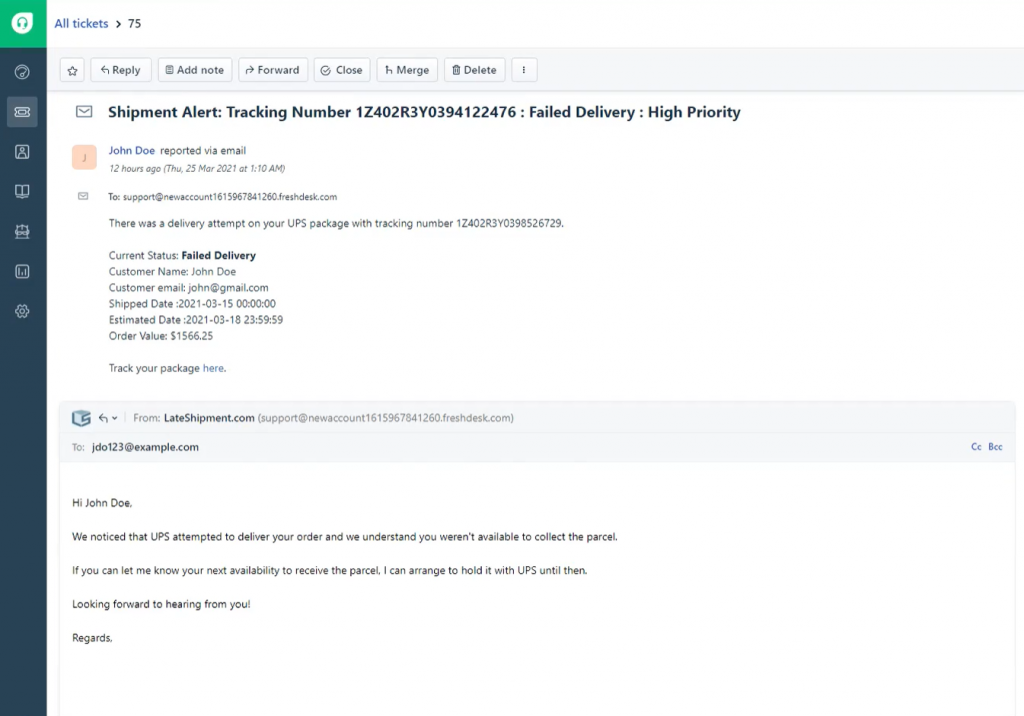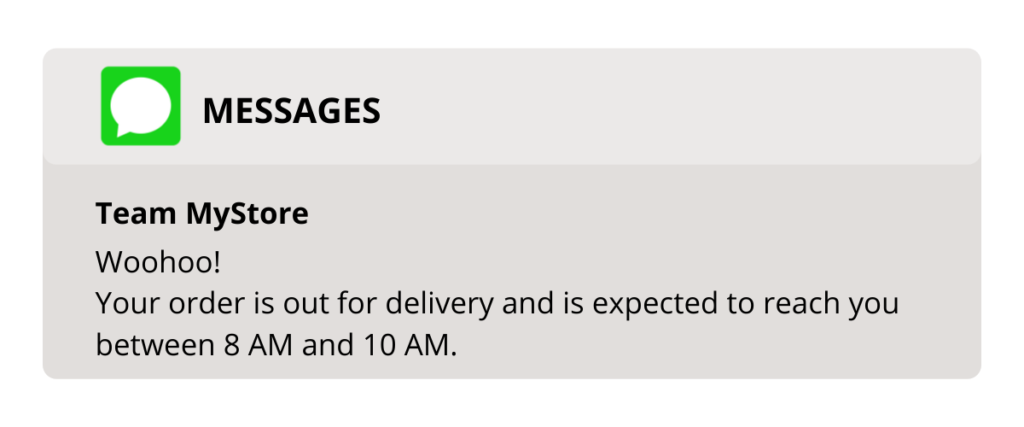Running an e-commerce business is tough. Rather than just acquiring a customer, you need to make sure you repeat sales with them to run a profitable venture. Here’s where the customer experience (CX) you provide can come in handy to ensure retention and increase lifetime value. However, disruptions in your shipping such as delivery exceptions and failed deliveries, which happen out of your control can play spoilsport in your CX efforts.
Imagine doing everything in your power to provide your customers with a great experience, only to lose them to something trivial like failed deliveries. Therefore, it is important to pay attention to failed deliveries and handle them effectively. But first, let’s start with the basics.
What Are Failed Deliveries?
Failed deliveries, also known as failed delivery attempts, are a delivery issue that is marked when the delivery is unsuccessful, i.e the delivery person being unable to hand over the package to the concerned customer.
The shipping carrier marks at least three instances of failed delivery attempts, after which the package is returned to the seller.
A failed delivery attempt may happen for any of the following reasons but you’ll be shocked to know that the main reason is simply that no one was at home to receive the package.
The other common reasons for failed deliveries are:
- Wrong or incomplete delivery address
- Customers refusing to collect the order due to damage or simply because of not wanting it anymore
- The package requires an adult signature and their unavailability at the moment resulting in requesting the delivery at a later time or date
While these reasons may look harmless, once they get marked as failed deliveries, their impact may be bigger than you think!
The Impact of Failed Deliveries on Your Business
Did you know the average cost of failed delivery attempts accounts for a collective $2 billion a year?
That looks expensive! Let’s break it down to understand better.
Firstly, after just one instance of a failed delivery attempt, the package is either rerouted to a different address, brought back to the facility, or is returned to the seller. In each case, there is a surcharge levied on your bill. Not to forget that there can be additional return shipping charges if the package makes its way back to you.
If shelling out dollars this way doesn’t seem to be enough, failed deliveries also damage your brand’s reputation and lead to 1-in-3 of your customers ditching your brand. Also, these customers who’ve faced bad delivery experiences will share negative reviews and further demotivate new customers.
Failed deliveries cause bad delivery experiences and further lead to lower CSAT and NPS scores.
Delivery issues like failed deliveries are inevitable. But you can definitely curb its impact to an extent that your customers are no longer frustrated by them but rather are satisfied with your commitment to resolving them.
Make use of a post-purchase success solution such as LateShipment.com to be awesome even when your carriers disappoint or when something out of your control goes wrong.
How Lateshipment.com Helps You Handle Failed Deliveries
LateShipment.com’s post-purchase action(able) plan for you to handle failed deliveries simply starts by empowering your support reps to take control of your package that has been handed over to the shipping carrier for delivery.
What follows are 3 simple steps that you need to follow to handle failed deliveries and change disappointment into delight.
1. Track your parcels in real-time
With the help of real-time tracking, you can keep a watch on your packages in transit and identify issues around package deliveries. To make it ridiculously easier for you, your packages across carriers are grouped by delivery events or exceptions (in this case failed deliveries), allowing you to dig deeper where needed.
With just a couple of clicks, you can simply access all shipments that have had failed delivery attempts and take your next course of action.
2. Set up automated ticket creation
Unlike delays or lost packages, failed delivery attempts cannot be resolved before they happen. But you can still take up faster action to considerably reduce their damage. And one way of doing that is by setting up automated ticket creation for 7 such delivery incidents (including failed deliveries) inside your helpdesk software.
3. Hyper engage with your customers
Once the ticket is created, you can set up processes to have a member of your support team reach out to your customer (in case the failed delivery attempt was due to their unavailability) and learn the reason for their unavailability.
In relevant cases such as the customer being on vacation, your support rep can now reach out to the shipping carrier to ask for a later delivery date, holding off the shipment, or routing to a different delivery address, based on the customer’s request.

By taking the above steps, you can simply prevent something trivial like failed deliveries from escalating to a larger problem.
However, that is not the end of it. If you feel you need to take the best action regarding failed deliveries, you need to reduce the chances of them occurring in the first place. Here’s how you can do that.
BONUS: 3 tips to prevent failed deliveries in the first place
Let’s start with the #1 reason behind a failed delivery attempt — the customer simply not being available when the delivery attempt is made.
To prevent such cases, you simply let your customers know that their order is ‘out for delivery’ and ask them to stay at the location to collect their orders. This gives you a slight chance to prevent a failed delivery attempt, in the circumstance of them leaving the location being avoidable.

#2 – To avoid issues such as wrong or incomplete delivery addresses, you can send out ‘order confirmation’ notifications with complete delivery information at the earliest.
In certain circumstances, customers might refuse to collect their orders due to product issues. In such cases, you can as well include product details such as size, color, etc, to rule out any confusion.

#3 – Proactively engage with your customers during critical delivery events such as delays, loss, or damages.
Once you’ve notified the customer of the issue, you can then follow up with the customer by offering solutions based on their requirement.
For example, you can either send out another package via an expedited shipping option to reach them at the earliest or provide them with discounts on their next purchase. This can help in avoiding failed delivery attempts and unwanted returns all while reviving the customers trust in your brand.

Conclusion
Remember delivery issues such as failed deliveries are inevitable in occurrence. However, resolving them quickly is possible, is easy, helps in reducing your customer’s frustration, and sets them on the course towards a positive delivery experience.
Seamlessly handling delivery exceptions can strengthen customer relationships. Try LateShipment.com today and start managing your delivery experiences with ease.
That’s all from us for now. It’s now your turn to grow your fanbase, savings, and business with LateShipment.com.






